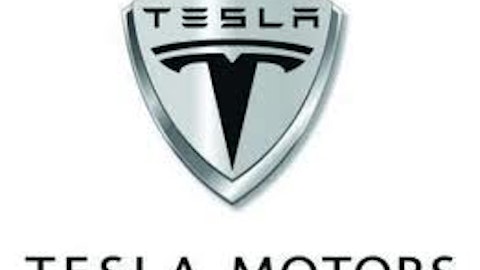Fortunately for Tesla, its current factory is a big one, built originally for a joint venture between Toyota Motor Corporation (ADR) (NYSE:TM) and General Motors Company (NYSE:GM). During the days of that joint venture, the factory was said to have an annual capacity of around half a million vehicles. Tesla should be able to ramp up to somewhere in that neighborhood without adding a facility.
That’s a lot of Teslas. But even maxing out its current factory may be a challenge for the company.
Tesla is surrounded by huge potential competitors
The second question is one that some observers have been asking all along: What happens to Tesla’s market if and when competitors enter it? Right now, Tesla Motors Inc (NASDAQ:TSLA) doesn’t have any direct competitors, but that’s not because the major automakers can’t compete with Tesla.
Instead, it’s because the mass-market automakers have largely stepped away from full-scale battery-electric-car development in the last couple of years, preferring to focus on more promising advanced technologies like fuel cells, while using (and adding to) their battery-electric expertise by building plug-in hybrids and small EVs for limited markets.
The problem, from their perspective, is that battery technology hasn’t advanced as quickly as many analysts were predicting just three or four years ago. Lithium-ion electric-car batteries are heavy, and expensive, and you need a lot of them to get good range, and recharging stations are few and far between.
Tesla Motors Inc (NASDAQ:TSLA) “solved” those problems with the Model S by designing a big car with enough luxury features to justify a high price, and by announcing plans for a network of recharging stations. It’s a good solution and the Model S has found a nice market – but make no mistake, it’s still a tiny niche market by global auto-industry standards.
But if there turns out to be a larger global market, it wouldn’t be very difficult for any of the mass-market automakers to build something similar to the Model S – and to leverage their much greater economies of scale to put heavy price pressure on Tesla. (Sure, Tesla has some patents that might need to be licensed or worked around. But Tesla didn’t invent EVs, and several of the big automakers have EV patent portfolios of their own going back a decade or more.)
What happens then?
So how is Tesla worth $100 a share?
I don’t think that the hard answers to either of these questions mean that Tesla is doomed. But I do think they call into serious question the extreme sales and profit growth assumptions that are now baked into Tesla’s stock at $100 a share.
At current prices, Tesla’s market cap is almost $12 billion. That’s about a fifth of BMW’s, and BMW sold 1,845,186 vehicles last year. Tesla expects to sell 21,000 in 2013, and BMW will probably sell around 2 million.
If we assume BMW’s fat margins and BMW’s brand strength and BMW’s consistent top-notch execution can all be approximated by Tesla, and we discount a bit (because BMW also has a motorcycle business that we’re not taking into account) we can say that Tesla has to pretty much max out its factory – or make about 500,000 vehicles a year – to be worth $100 a share at BMW’s multiple.
Clearly, it’s not close now. But can it get close?
